
E-mail: font@focusonnature.com
Phone: Toll-free in USA 1-888-721-3555
or 302/529-1876
 |
PO
Box 9021, Wilmington, DE 19809, USA E-mail: font@focusonnature.com Phone: Toll-free in USA 1-888-721-3555 or 302/529-1876 |
ALASKA
A Birding
& Nature Tour
in a Wild & Beautiful Land
with Experiences
Always to be Remembered!
A SPECIAL ALASKA TOUR
IN 2 PARTS
May 23 - June 6, 2016
(Tour
FON/AK-1 a & b '16)
Tour AK-1a: In the SOUTH in Anchorage, Valdez, and the Denali Area
May 23-30
Tour AK-1b: In the NORTH from Fairbanks to the North Slope
May 31 - June 6
The complete itinerary follows below.
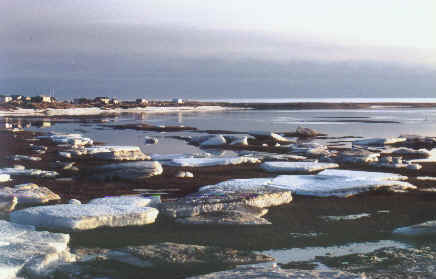
A photograph of an Alaskan coast, taken during a previous FONT tour,
in the light of the Midnight Sun.
Links:
A List of Alaska Birds, noting those during FONT tours (with some photos)
A List & Photo Gallery of North American Birds, in 6 parts
Alaska Mammals (with some photos) Alaska Butterflies
Alaska Wildflowers "Northern Plants" inc. those in Alaska, Iceland, & Hokkaido, Japan
Marine Life of Western North America, including Alaska (with some photos)
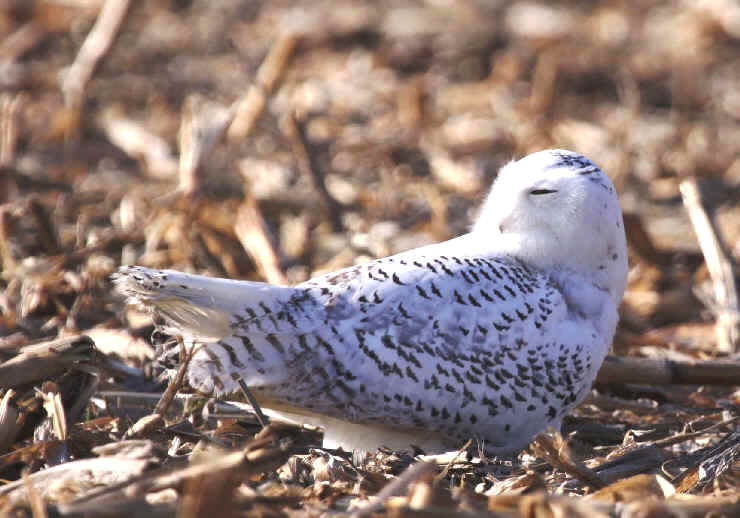
Above: a Snowy Owl.
Below: a Harbor Seal
(upper photo by Marie Gardner; lower photo by Howard Eskin)
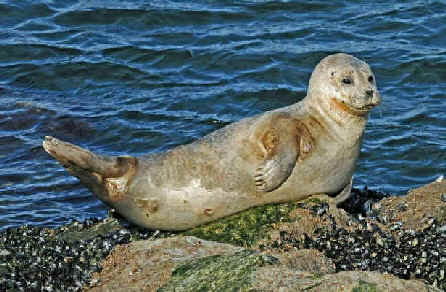
Itinerary:
Mon: May 23 Arrival in
Anchorage. The night's
accommodation there, not far from the Cook
Inlet.
The extensive mudflats there can be, dependent upon the tide,
superb for flocks of shorebirds. Dependent upon our arrival
times and the tide, there may be some good
shorebirding before the day's end.
Tue:
May 24
Birding from Anchorage east
along the Glenn Highway toward Glenallen.
There will be truly beautiful scenery along the way, as there will honestly be
throughout much of this Alaska. But, this day, along the first highway of the
tour, there will be snow-clad mountains, glaciers, rivers, ponds, lakes,
and forest that will make a memorable first impression.
And the birds will too. Among them, those of the boreal forest,
including: Gray Jay, Boreal Chickadee, Pine Grosbeak, and
hopefully, our first Northern Hawk Owl.
On ponds, there would be Trumpeter Swans, Barrow's Goldeneyes, other ducks,
and loons.
Among the mammals that we could see: our first Moose, and Bears
(both Black and Brown).
Our overnight will be at the nice lodge at Sheep
Mountain, a place where in the past we've had very good meals, in
addition to the beautiful scenery right outside the door.
Sheep Mountain is so-called because the
all-white Dall's Sheep are there, either high up on teh rocks, or, if
we're lucky, closer to us.
Wed & Thu: May 25 & 26 After
lunch on Wednesday, we'll head east toward Glenallen, where
we'll spend that night and the next.
Later in the day on Wednesday, we'll do our first exploring in the area
of the Wrangell - St. Elias National Park and Preserve.
We'll make an effort this day to see Spruce Grouse, but we will see a
good many other birds as well, and probably some interesting mammals.
The Wrangell - St. Elias National Park is
the largest of all the US national parks, with 13.2 million acres, of which 9.7
million acres is designated as "wilderness". The large size of the
park is why we'll be spending two nights in Glenallen and much of two days in
the area.
The national park is the size of
the country of Switzerland, and the mountains in it are higher.
Some of the back roads that we'll travel looking for Spruce Grouse, and other
boreal birds, can be as good as any for Lynx, Timber Wolf, and Wolverine
("interesting mammals" indeed).
Time, this day, should permit us this day to go to Tok,
where we'll drive a bit of the famed Alaska Highway,
as we go to and from the Tetlin National Wildlife
Refuge, one of the two national wildlife refuges in Alaska accessible
by vehicle. Another set of birds, of open habitats, will be found there.
Two overnights in Glenallen.
Fri: May 27 We'll head south from Glenallen toward Valdez,
looking for birds and mammals along the way. Assuredly, we'll see
some "good things" in both categories.
We'll be in the Copper River Valley, and
along the western edge of the Wrangell - St. Elias
National Park.
The last section of the drive, before Valdez, is said to be one of the most
beautiful stretches of road anywhere in North America, and thus, also, anywhere
in the world.
Our first overnight in Valdez, a small town on the coast of the Prince
William Sound. Oh, one thing about the Valdez area: we've been told
that there are four times as many bears there than there are people, both
Black Bears and Brown Bears.
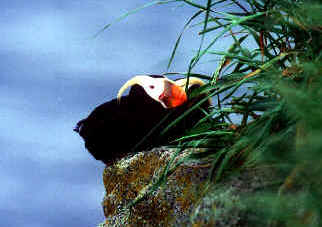
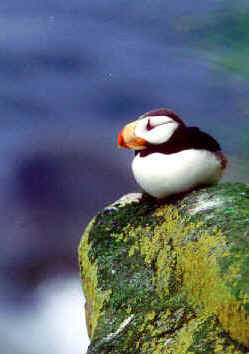
Two species of
Puffins in the Valdez area,
the Tufted Puffin (left), the Horned Puffin
(right).
(Photos by Paul West during a FONT
tour)
Sat: May 28 But a
highlight of what we'll be doing in Valdez, and in fact one of the highlights of
our whole tour, will be a boat-trip in the Prince William Sound during which, among other things, we
should see murrelets:
including the now critically endangered Kittlitz's among
them.
The Kittlitz's Murrelet like the water near glaciers, and during the boat-tip
we'll be at the right place, close to the glacial ice.
And other birds will been seen too, including two species of Puffins, the Horned and
the Tufted, and the Red-faced Cormorant, just to name a few.
Marine mammals likely to be seen will include various whales,
sea-lions and sea otters. The most likely whales will be
Humpback Whale and the Orca. Also porpoises.
It'll be a day never to be forgotten. At the end of the day, a wonderful meal of
Alaskan seafood (with fine fish such as salmon), and our second overnight in
Valdez.
Sun: May 29 Leaving Valdez, after the bears
and the sea-life, and whatever else we've seen, we'll head north, back
through Glenallen, but continuing beyond to the area of Paxson, we should
find birds not yet found during the tour.
A target species would be the Smith's Longspur. And there should be birds
still in their migration to their breeding sites further north in Alaska. Among
them, maybe the Red Phalarope.
Some species on their way north we may not encounter when, later during the
tour, we go further north.
Birds that we could see this day include: Townsend's Solitaire,
Bohemian Waxwing, Lapland Longspur, Long-tailed Jaeger, Golden Plover,
Golden-crowned Sparrow, and American Tree Sparrow, just to name a
few.
We have some birding contacts in the Glenallen area and if there are any
"unusual birds" about, in the area, we'll know, and go for what we
can.
One thing we would go for, if we get a site, would be Great Gray Owl. (And
we're aiming to get a site!)
Overnight in the Paxon area.
Mon: May 30 If road conditions permit, we'll travel along the Denali
Highway, one of the most spectacular drives anywhere, not only in
Alaska but anywhere.
The area is wilderness and has wildlife as wilderness does, with mammals
including bears and moose, and birds including nesting Long-tailed
Jaeger and Rock Ptarmigan.
We'll overnight in Cantwell, at the west end
of the Denali Highway, and near the Denali National
Park.
If we can not travel along the Denali Highway (and if that were to be it
would most likely be due to flooding), we'll travel north instead from
Paxson to Delta Junction along the famed Alaska
Highway east of Fairbanks.
Along that route there would be birds and other nature to be found
and enjoyed much as there would be along the Denali Highway. The scenery, either
way, is truly far from shabby. If we take the alternate route, our overnight
will be in Delta Junction.
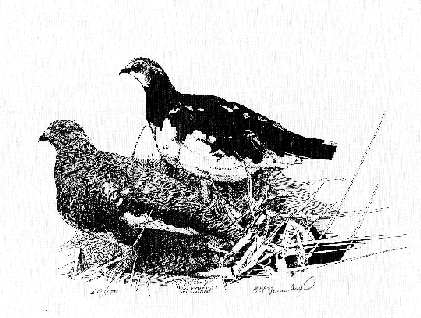
Male & female
Rock Ptarmigan
(Drawing by Charles Gambill)
Part Two of this FONT Alaska Birding
and Nature Tour
north from Fairbanks to the Brooks Range and by the Arctic
Ocean
Tue:
May 31 Travel from either Cantwell or Delta Junction to Fairbanks,
with birding along the way.
Overnight in Fairbanks, following some time filled with more birding, other
nature observation, and some sightseeing in the Fairbanks area.
Wed: Jun 1 We'll drive north from Fairbanks and begin our travel on Dalton
Highway.
Along that road, that goes due north toward the Arctic Ocean, parallel to
the Trans-Alaska Pipeline, we'll experience
some interesting birding, and miles of wilderness not be so experienced nearly
anywhere else.
The first stretch of road will be in predominantly spruce forest, but
with other trees too, where birds could include Alder and Olive-sided
Flycatchers, White-winged Crossbill, Northern Goshawk, just to name some.
We'll cross the large Yukon River (on the
only bridge over it in Alaska).
Further north, in more open country, we'll go atop Finger
Mountain, where there are some interesting plants, butterflies,
and birds of the tundra.
In late May, there should still be a large number of birds in migration,
going north as we are. The birdlife may be abundant, with raptors,
including both hawks and eagles, as well as Short-eared Owl,
Sandhill Crane, Long-tailed Jaeger, Lapland Longspur, and shorebirds
no where near the coast, such as American Golden Plover, Whimbrel, and Hudsonian
Godwit.
An exciting mammal will certainly be a possibility as we continue along
the highway.
During our travel this day, we'll not only will we cross the Yukon, but also the
Arctic Circle, at a latitude of 66 degrees
north. There are not many places on Earth where one can cross that imaginary
line in a vehicle, and so enter the Arctic.
Yes, we'll truly be in "the Arctic".
A book was written back in the 1930s, said to be a classic, entitled "Arctic
Village". It was written by Robert Marshall, one of the founders of
the Wilderness Society.
The "village" referred to in that book is Wiseman,
in the pristine, wild valley of the Koyukuk River.
Marshall wrote about that area when there was no road (the Dalton Highway
was made later in 1974). To get to Wiseman
when "Arctic Village" was written, the most common mode of
transportation was dogsled in the winter. During subsequent years, and before
the road, a small plane was the way.
Nowadays, there are just over a dozen permanent residents in Wiseman,
and we'll spend the night there in a "lodge", miles away from
civilization as most of us know it.
If we're with good fortune, during our time there we may hear wolves howl,
or see one or more. Near the town, there's another good chance for Northern
Hawk Owl, at a place where most years lately they've been known to nest.
Another possibility in the area is the Boreal Owl.
Thu: Jun 2 We'll do a lot of exploring and birding, this day, further
north along the Dalton Highway before returning to Wiseman
for a second night.
We'll go to the Atigun Pass, in the
Brooks Range, which, at 4,800 feet above sea level, is the highest
pass accessible by road in all of Alaska.
In that area, two peaks flank the Kayukuk River,
appearing as a "gateway to the Arctic". That phrase was coined by
Robert Marshall, and now the name continues as the title of the very big Gateway
to the Arctic National Park (the
2nd largest national park in the US), that begins where we will be, and goes for
many miles to the west. Going many miles to the east from the Atigun Pass is the
huge Arctic National Wildlife Refuge.
Combined, both areas make a tremendously large wilderness.
We'll pass the last of the spruce trees, as we go parallel to the river. Along
the river, we'll look for tattlers and other birds. In sparse
stands of Arctic willows, we'll look for Northern Shrikes and other
birds.
Falcons could be Merlin, Peregrine, and, yes, Gyrfalcon.
In the area of the pass, we should see, as we did the previous year, Northern
Wheatear. Also, Gray-crowned Rosy Finch and American Pipit
occur. Both Ptarmigan (Willow & Rock) and Snow Buntings
can be found, this day, as well as American Tree Sparrow, Arctic Warbler,
and one of "the best" birds to be seen, the Bluethroat.
And, as if these birds were not to be enough, again, an "exciting mammal"
could be seen.
At the end of the day, we'll go back to Wiseman
for another overnight, and to fill up with fuel for the next day.
Fri: Jun 3 We'll go north again on the Dalton
Highway beyond where we had been the previous day. Beyond the Atigun
Pass and the Brooks Range, the
road continues downslope for miles. The terrain is high, hilly tundra with rocky
outscrops and patches of shrubs. It is Rock Ptarmigan country.
At freshwater lakes, that are frozen most of the year, we may see on the open
water birds such as Long-tailed Duck, Glaucous Gull, and 3 species
of loons.
In the open country, as we continue along the highway, we'll watch for Rough-legged
Hawk, Long-tailed Jaeger, Golden Eagle, and still the 3
falcons noted earlier (Merlin, Peregrine, and Gyrfalcon).
Among the passerines in the area are Eastern Yellow Wagtail and both Redpolls
(Common & Hoary).
About 60 miles before Deadhorse, we'll be on the coastal tundra (as we'd be
getting closer to the Arctic Ocean),
where birds would include phalaropes, Parasitic Jaegers, and many
geese and ducks. Notable among the latter, the Spectacled Eider is
possible.
Also possible, among the shorebirds, would be a visitor or two from Asia,
such as the Red-necked Stint, the Ruff (or Reeve), or the Eastern
Black-tailed Godwit.
Mammals in the area, that could possibly be seen, include Caribou,
Musk Oxen, and Arctic Fox.
We'll overnight in Deadhorse. In the area of that settlement, we should see
birds such as Snow Bunting, Lapland Longspur, Greater White-fronted
Goose, Cackling Goose, Pacific Loon, Red-necked Phalarope, and, there may
well be other species too, such as the Red Phalarope, Bar-tailed Godwit
and Sabine's Gull.
Sat: Jun 4 After our final birding in and near Deadhorse,
we'll start our travel back to Wiseman, with
birding of course along the way. Overnight, one last time, in Wiseman.
Sun: Jun 5 Our travel southward along the Dalton
Highway will continue back to Fairbanks.
And of course our birding will not end until we get there. Overnight in
Fairbanks.
Mon: Jun 6 Our last birding will be in the Fairbanks area,
continuing until we're at the airport for our departure from Alaska.
Tour to be led by Armas
Hill.
Prices (in US $):
Tour 1a: southern Alaska, May 23-30: $1,695
Tour 1b: northern Alaska, May 31 - Jun 6: $1,595
Tour 1a & 1b, southern & northern Alaska, May 23 - Jun 6: $2,590
All prices based upon double occupancy. Single supplements below.
Prices include hotel accommodations,
meals (except dinners), ground transportation, and birding excursions
(not including flights to/from Alaska)
Single
Supplements, if requested:
Tour 1a: $195
Tour 1b: $185
Tour 1a&b: $375
Tour
prices include:
All overnight accommodations - all of good quality.
Breakfasts and lunches.
All ground transportation.
Boat-trip at Valdez.
Services of FONT birding guide.
Tour
prices do not
include:
Air transportation.
Dinners. Alcoholic Drinks. Gratuities. Any
items of a personal nature
Focus On Nature Tours can
arrange air travel, and would seek the best possible fares.
To do
this, FONT should be advised, as soon as possible.
With
reservations and ticketing done early, there may be better
fares.
Deposit
to register for the tour:
$400 for tour 1a, $400 for tour 1b